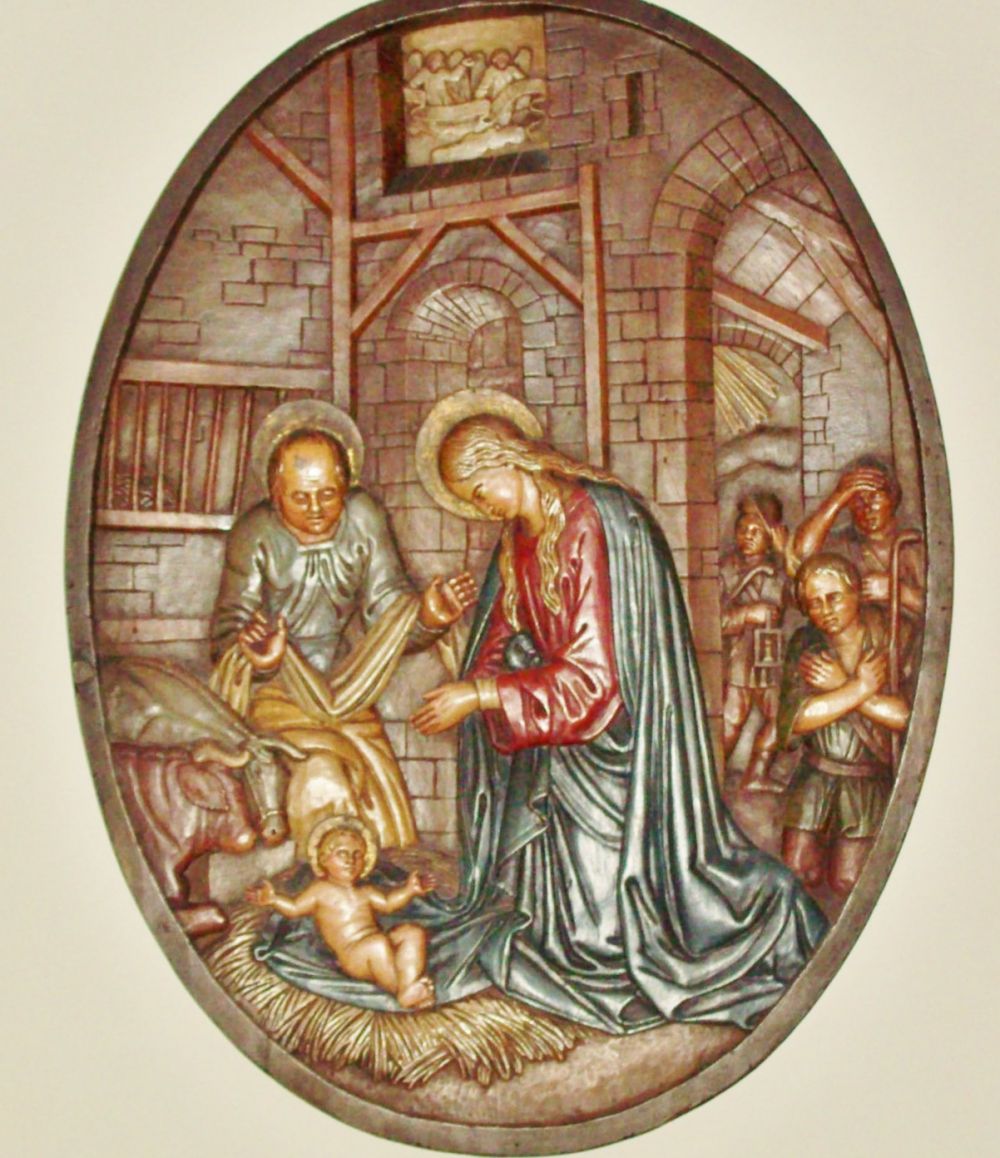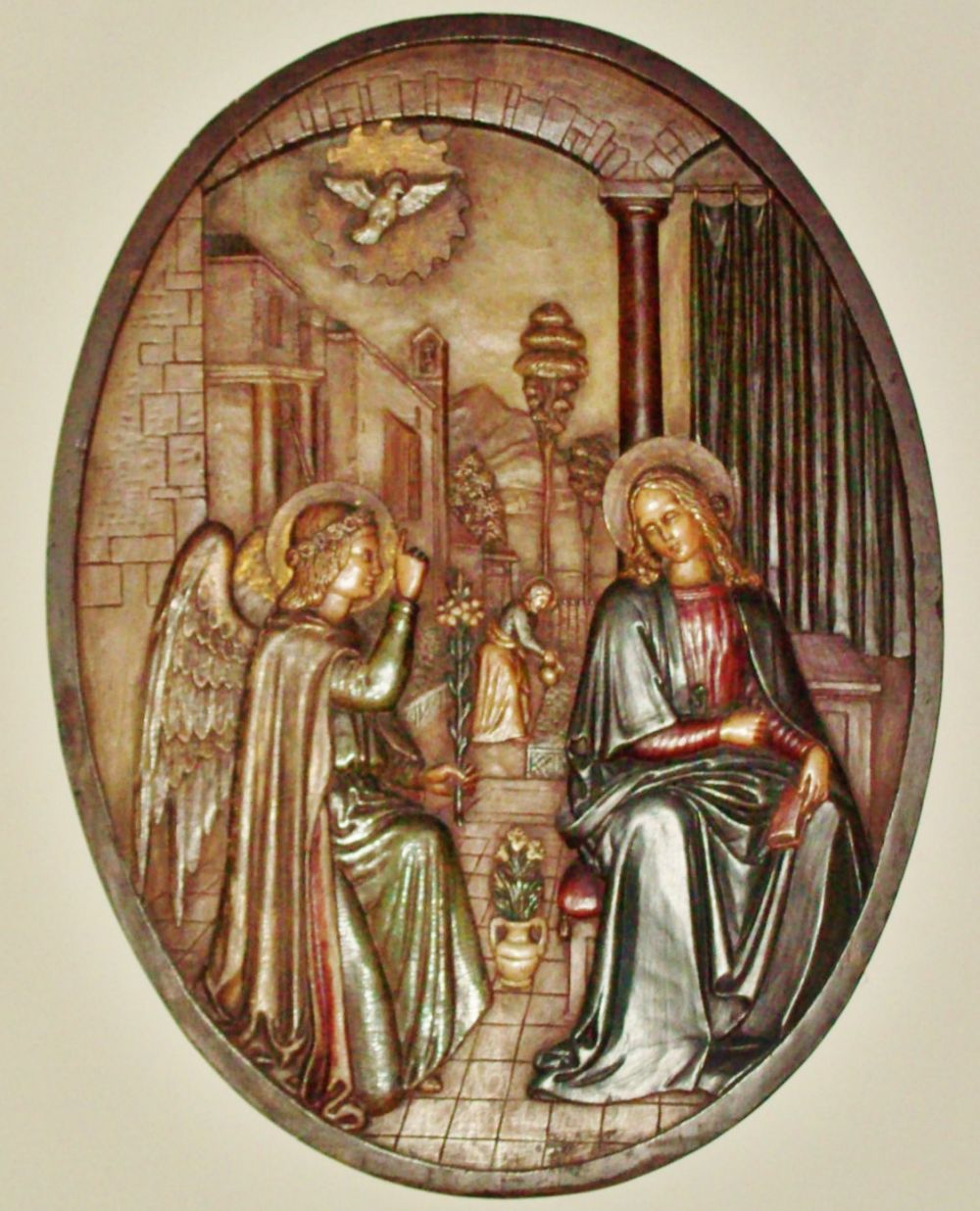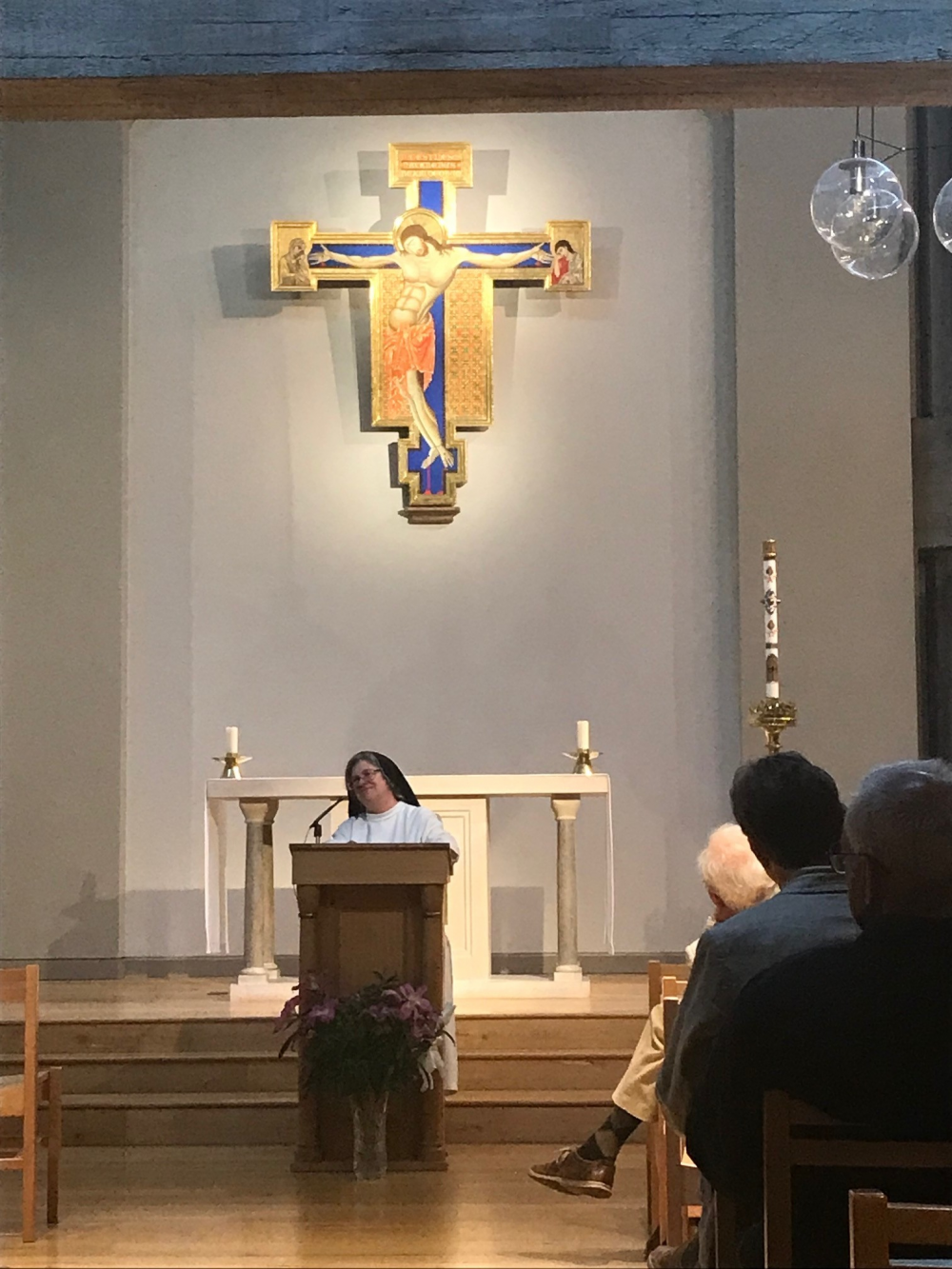
The Nativity
St. John begins his Gospel with words that are both beautiful and mysterious:
“In the beginning was the Word, and the Word was with God, and the Word was God.” [Jn 1:1]
He tells us that all things were made through this Word, that the Word is Light and Life, and then he announces the heart of the Gospel:
“The Word was made flesh and dwelt among us, and we have seen His glory.” [Jn 1:14]
This is the mystery we call the Incarnation: that God the Son truly took on our human nature, entered into time, and lived among us in order to give us grace and to reveal the Father.

The Annunciation
Of course, it’s easy to see how Mary conceiving Jesus makes preaching the Good News possible. When the holy one who is to be born of her grows up, he will proclaim, and he will send his apostles to proclaim, the Gospel. But I want to explore just a little of what it might mean to say how the Annunciation itself, Gabriel interrupting Mary’s day to tell her that she will be the mother of a Son who will have only God for his Father, is Good News.

Fifteen years of memories
This year Sr. Ann retired from the Cambridge University Catholic Chaplaincy where she has worked for the last fifteen years. The following is a reflection she wrote for the Fisher House Newsletter.

Eating the bread of sorrow: St. Therese of Lisieux
I hope no one here is expecting a talk from a great expert on contemplative prayer, because there’s no sense in which I’m that! But in fact, I doubt that the saints who will be our companions this week and next would have considered themselves in this light – and I suspect if we asked Therese, or John of the Cross, to name such an expert, they would have responded that is the wrong sort of question. What do I mean?

Sr Mary John's Golden Jubilee
On August 23rd Sr. Mary John celebrated her Golden Jubilee. A beautiful Mass with many priests was held at St Peter's Catholic Church Leicester, after which a splendid buffet was shared by Sr Mary John's many friends, sisters and colleagues, including several guide dogs who sat at the back of the Church and behaved (nearly) impeccably.
Sr Mary John works with 'Pets as Therapy' with her companion dog Molly, who works her magic every week in many locations